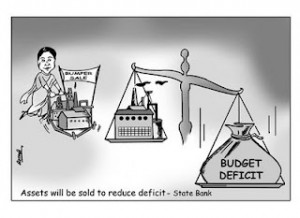Banking in the Spotlight in New Mexico
There was a recent Symposium in Albuquerque, New Mexico on November 7, 2015 to Promote Public Banking.
First of all, what is a Public Bank? I am not sure there is a good definition but presumably it is not a private bank or even a non-profit bank but in some sense is associated with government and I think we are talking here about something other than the Central Bank of a nation. Thus perhaps the best way to look at a Public Bank is that it is a bank owned by a political jurisdiction and intended to advance the interests of the political jurisdiction which presumably means the residents of that political jurisdiction. But there may be differences of opinion as to the range of services that need to be provided in order for this entity to be considered a bank. It is important to understand that certain banking functions are performed by governmental entities which do not have a bank charter. This could be important.
Here are statements by a state legislator. First, after eleven years in the Legislature, I was astonished to see, in a “weekly report of activity” from the LFC. The LFC is the Legislative Finance Committee which employs fiscal analysts who examine budgets and review the management and operations of state agencies, higher education institutions and public schools and participate in the state’s revenue estimating process. Buried in a paragraph updating us on department activity, the sentence that “the Department of Transportation had awarded a $6 million loan for a wastewater system with Estancia. The funds will be processed through the State Infrastructure Bank.”
I was astonished for two reasons: first, what is the Transportation Department doing lending money for waste water infrastructure? Second, what in the world is the State Infrastructure Bank? I confess in my time as a legislator, this entity had never been mentioned to me…at least I couldn’t recollect ever hearing about it. So I did a bit of internet research, and while the NM State Infrastructure Bank eluded my search, the general concept of state infrastructure banks produced a wealth of information. I now realize that we are among the states which have for years been utilizing this simple method of financing some of our projects for highways and water. I couldn’t determine for sure, but it appears in NM we have housed the “bank” in the department of transportation (bridges and roads would be one of the uses, so this makes sense).
State Infrastructure banks are “a well-regulated method for financing projects selected by the state. A low-interest, below market rate, loan is issued to finance the project. Repayments, including interest, return to the bank and are then available for lending out for additional projects.” What struck me about the existence of this mechanism is that it is precisely the way a public bank would function. We, in effect, already have one–just haven’t named it as such and haven’t made full use of its simple, elegant mechanism…so why not?
The power of the banking lobby. Their program fits with their overall strategy of convincing Americans that banking is far too complex an issue to be attempted by anyone but members of the banking brotherhood. Leave your financial dealings to us…you’ll just screw them up. This ignores the reality that is described in numerous books I’ve been reading on the topic following last fall’s symposium on public banking in Santa Fe. Ellen Brown’s “Web of Debt” is the cornerstone for the discussion. Michael Lewis, among others, has explored just how it was possible for the banking industry to get things so terribly wrong during the housing bubble and the resulting crash of 2008 in “The Big Short” and “Boomerang”. What becomes clear from these works is that bankers are NOT the smartest guys in the room; that in fact the incredible profit they are able to produce out of public financial dealings is in no way a necessity. Instead, there is plenty of room for a state (like North Dakota) or a City (as Santa Fe is attempting) to omit the banking industry from many (if not all) of its finances.
Like you, I think it would make sense to move slowly and carefully in incremental steps, building on those activities in state government that are already very much like public banking, like my new discovery of the State Infrastructure Bank (SIB) or the State Investment Council (SIC). What I would see happening first would be to expand the SIB’s role, increasing the amount and number of self-financed projects, projects in which we pay ourselves a modest return rather than see public money go into bankers’ vaults for no good reason. In time this could include issuing our own bonds. It could involve an initial deposit from the state operating reserves of a percent or two (each percent represents $62 million and we are currently carrying over 10% reserves, far more than actuaries say is necessary). That deposit, used to finance state or municipal projects (a la the SIB) would earn a better return than we now get from the reserves, which are not invested but retained in a private bank “until we need to withdraw it”.
Governance of a public bank is the big concern. It needs to be as independent as possible from the executive and the legislature. Decisions about its operation should be divorced from political considerations. We can do it…if North Dakota can. In time it could develop into a full-blown State Bank, one that buys a piece of commercial loans entered into by community banks, reducing the overall interest rate and fostering economic growth for local business. Banking in the Spotlight in New Mexico

